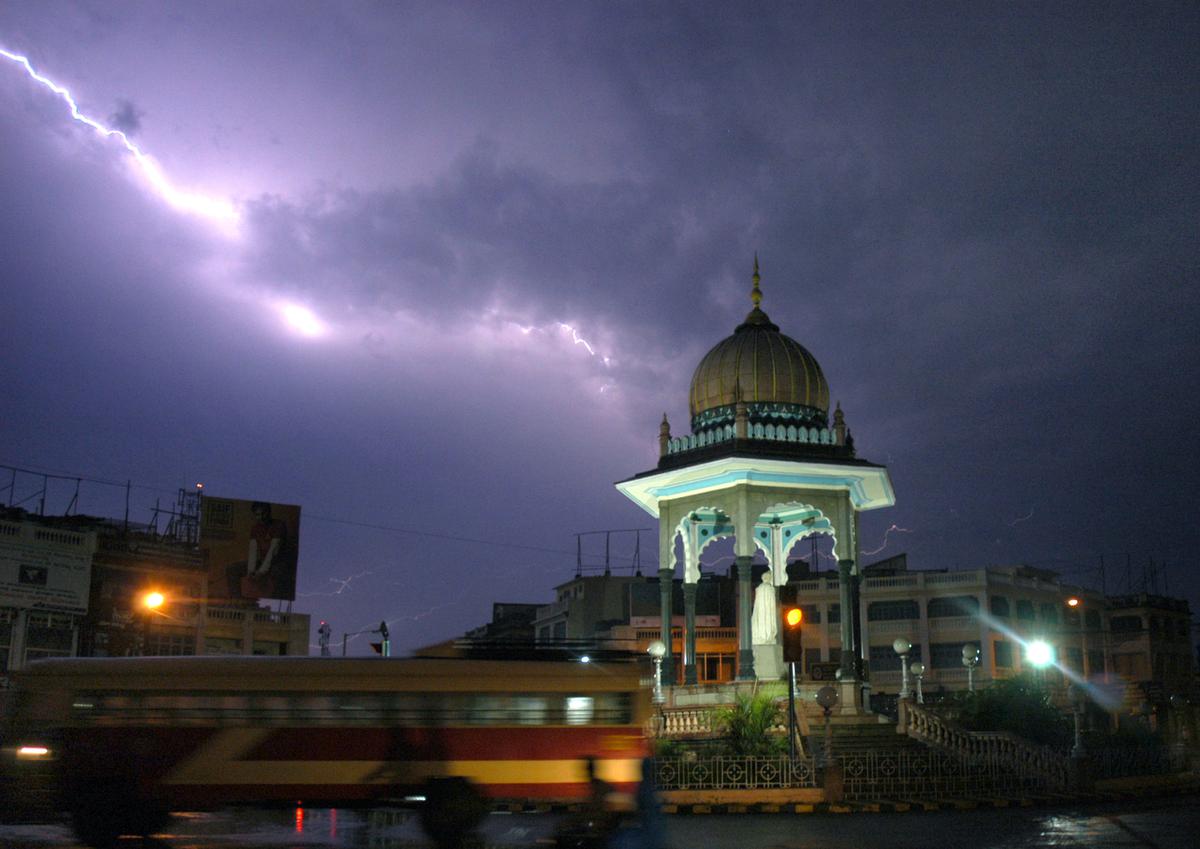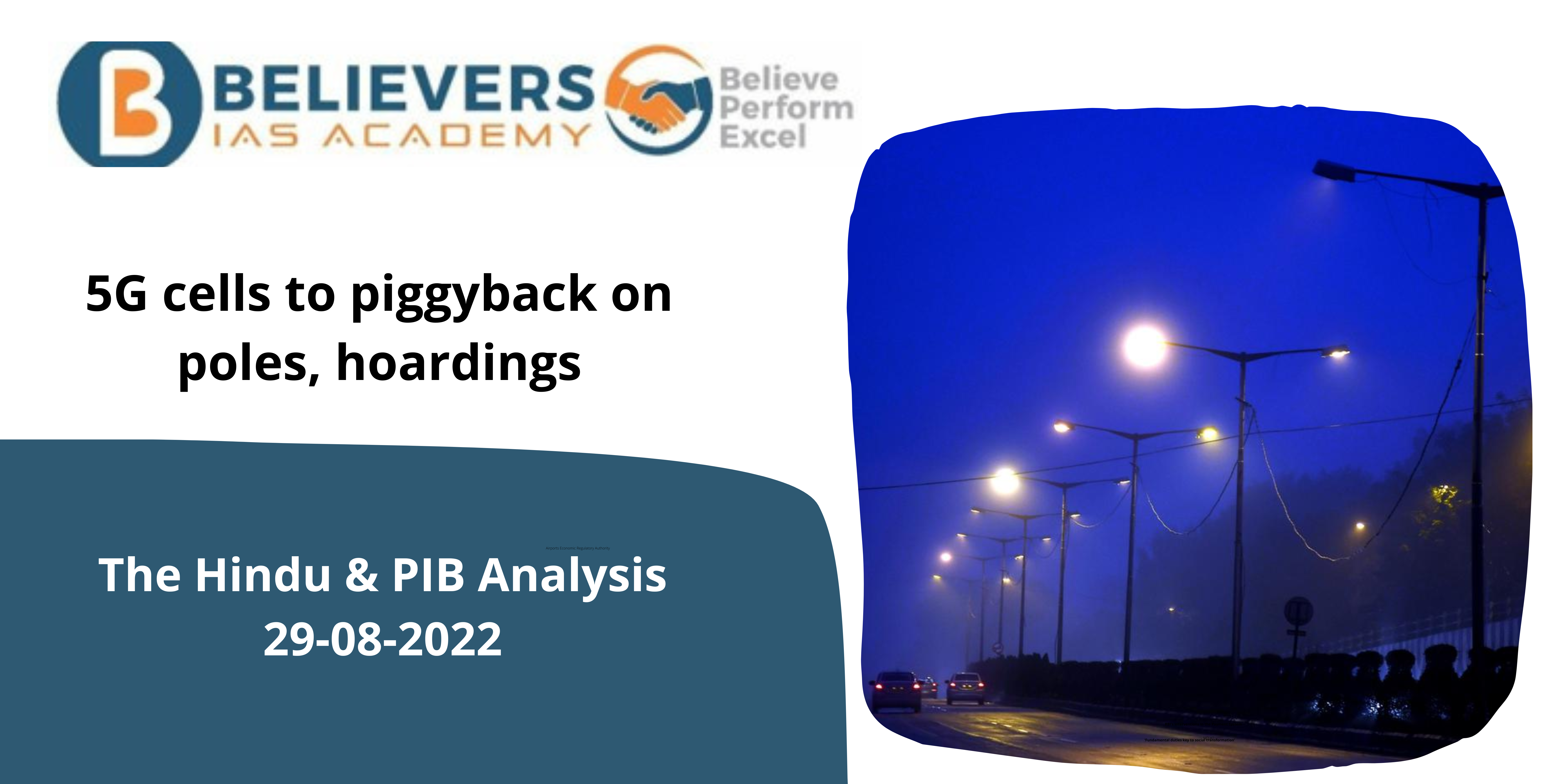Lightning not a natural disaster, says Centre
Context
According to a senior government official who spoke on the record on the condition of anonymity, the Union government opposes designating lightning as a natural disaster because deaths caused by it can be avoided by raising people’s awareness of safety precautions.
What is lightning?
- Electrostatic discharges through the atmosphere between two electrically charged regions are what generate lightning, a natural occurrence.
- Within a single thundercloud (intra-cloud), between two clouds (cloud-to-cloud), or between a cloud and the earth (cloud-to-ground) are all possible places for lightning to strike.
- One gigajoule of energy is often released during a lightning discharge, which causes a variety of electromagnetic radiation to be produced.
- During a lightning discharge, the passage of electrons creates heat and bright visible light flashes.
- Thunder is the sound made by the shock wave caused by the lightning-induced abrupt rise in atmospheric pressure.
- Lightning can occur during volcanic eruptions as well as thunderstorms and other weather systems (volcanic lightning).
- Intra-cloud, cloud-to-cloud, and cloud-to-ground (lightning strike) lightning are three different types of lightning. Additional variations can be observed, such as heat lightning, dry lightning, and ball lightning.
- Since humans have long admired and worshipped lightning, many languages have idiomatic terms that refer to it.
- The term “astraphobia” refers to the fear of lightning.
- The earliest surviving photograph of lightning was shot in 1882 by William Nicholson Jennings, although the first known photograph of lightning was taken by Thomas Martin Easterly in 1847.
- There is proof that particle emissions, a type of air pollution, may cause lightning activity to increase.
- On the quality of the air, lightning can have both beneficial and detrimental impacts. While producing nitrogen oxide and ozone, it can aid in the atmospheric removal of greenhouse gases like methane.
- Wildfires are frequently started by lightning, which can hasten climate change.
- A deeper understanding of the intricate connections between lightning, air pollution, wildfires, and climate change is necessary.
Can we categorise lightning as a natural calamity or disaster?
- Lightning is not often seen as a natural disaster or calamity. Instead, it is regarded as a natural occurrence or phenomenon. Natural catastrophes or tragedies are typically large-scale occurrences that result in severe destruction, human casualties, and property damage.
- However, lightning may unintentionally worsen natural disasters. For instance, wildfires, which can be destructive and result in the loss of life and property, are frequently caused by lightning strikes. In this sense, lightning-related effects like wildfires might be categorised as natural calamities.
- Additionally, people can be immediately at risk from lightning. Despite being very uncommon, lightning strikes can result in harm or even death. During thunderstorms, these instances might happen when people are outside or have little cover. Although lightning-related accidents or fatalities are not classified as natural calamities on their own, they can contribute to the more general effects of severe weather.
What is India’s Stand on this topic?
- Government Position: A prominent official speaking for the Union government opposes classifying lightning as a natural catastrophe. The authority thinks that raising awareness and teaching people about safety precautions may help prevent lightning-related deaths.
- Early Warning System: Only five nations in the world have a lightning early warning system, and India is one of them. The technology offers projections from five days out to as early as three hours, assisting people in planning and taking preventative measures.
- State demands: States have demanded that lightning deaths be classified as a natural catastrophe, including the states of Bihar and West Bengal. In this case, the State Disaster Response Fund (SDRF), which receives 75% of its funding from the federal government, would be able to compensate the victims.
- Bihar’s viewpoint: The disaster management minister for Bihar, Shahnawaz Alam, emphasises that Bihar is one of the states that are most susceptible to lightning strikes. Up to July 6, 107 people had died in the state as a result of lightning. He hypothesises that climate change may be a factor in the rise in fatalities from lightning.
- NCRB data: Data from the National Crime Records Bureau (NCRB) show that lightning strikes, which resulted in a total of 2,880 fatalities in 2021, accounted for 40% of all accidents brought on by “forces of nature”. Compared to other accident-related mortality brought on by natural events, the proportion of deaths caused by lightning has been rising.
- Deaths from lightning vary: The northeastern states, along with West Bengal, Sikkim, Jharkhand, Odisha, and Bihar, have the greatest lightning strike frequency. However, states in central India including Madhya Pradesh, Maharashtra, Chhattisgarh, and Odisha have a higher fatality rate.
What are the ways that we can prevent injuries or deaths related to Lightning?
- Keep informed: Be attentive to the weather, especially during the seasons when thunderstorms are likely. Stay informed about impending storms by listening to weather updates, using weather apps, or following trustworthy sources.
- Seek Shelter: A safe indoor area should be sought out as soon as a thunderstorm is forecast. Protection might be provided by a strong structure or a completely enclosed vehicle with a metal roof and closed windows. Avoid tents, open structures, and convertible vehicles.
- Avoid open spaces: If you’re outside and can’t get to a safe place, stay away from open fields, hilltops, big, lonely trees, water, and metal items. Lightning strikes are more likely to occur around these. While looking for low-lying locations, keep in mind that flash flooding is a possibility.
- Avoid being near the water: Steer clear of the water while a thunderstorm is occurring. Because they carry electricity, water bodies are high-risk locations when lightning strikes.
- Stay indoors: Once inside, keep clear of windows and doors and steer clear of any plumbing or electrical equipment. Lightning can travel through conductive paths like metal pipes or wiring.
- Unplug Electronics: Unplug electronic equipment during thunderstorms to avoid harm from power spikes brought on by lightning.
In conclusion, the Indian government is currently opposed to classifying lightning as a natural disaster, highlighting the significance of education and safety precautions to prevent deaths caused by lightning. While some states are pushing for recognition and compensation, the federal government thinks the best way to deal with the problem is to inform the public about the risks associated with lightning.





